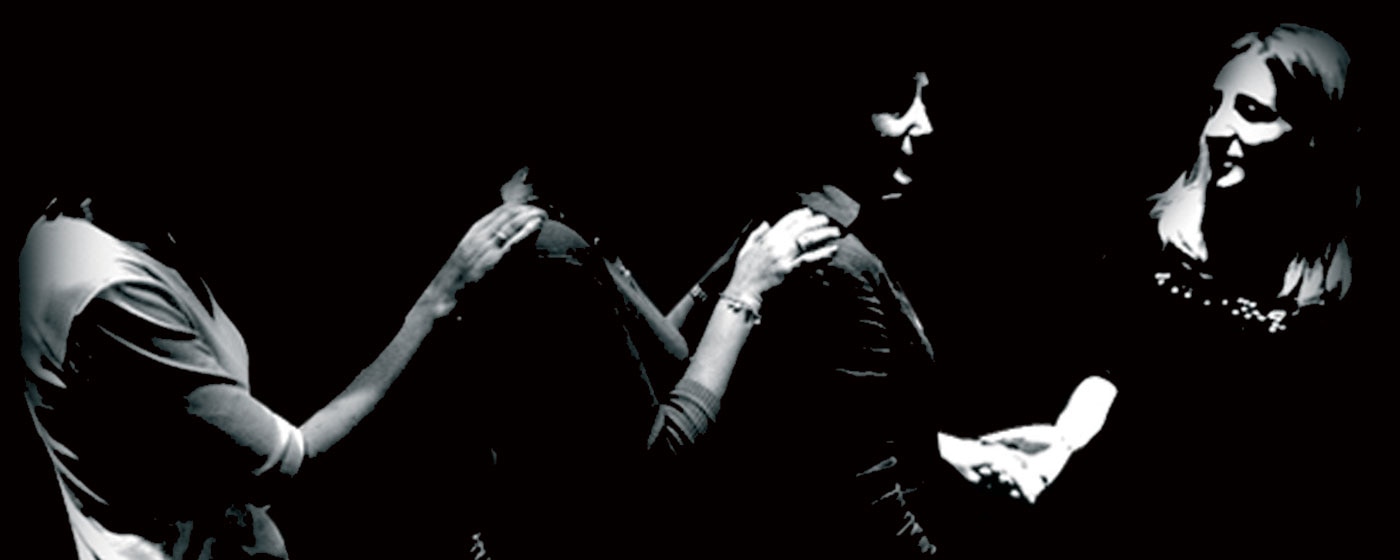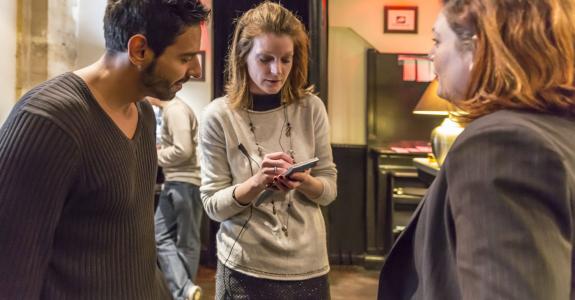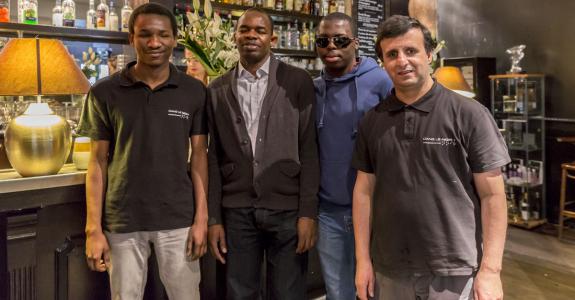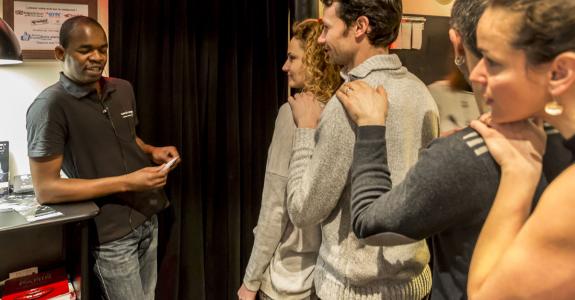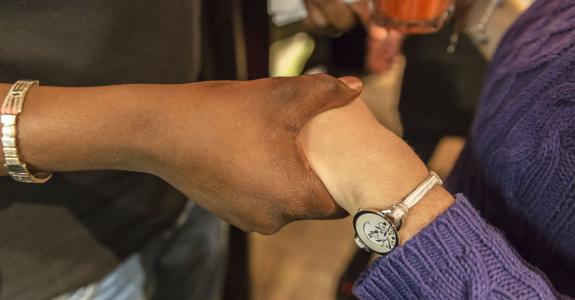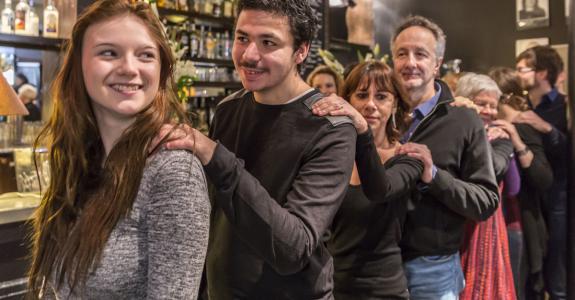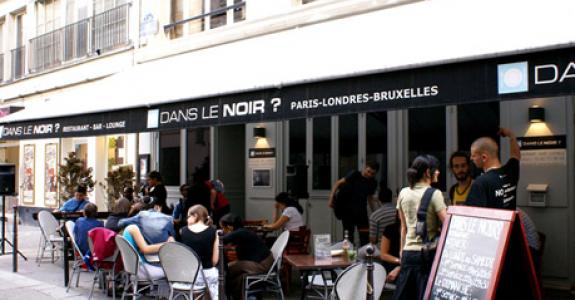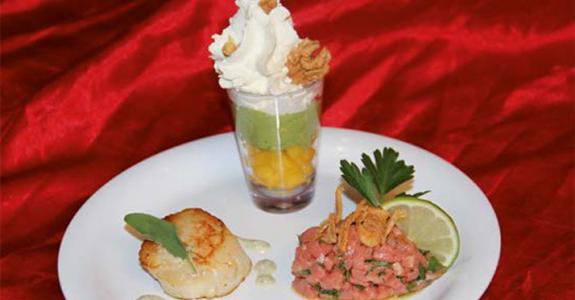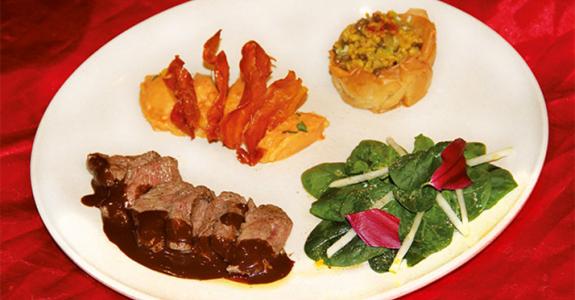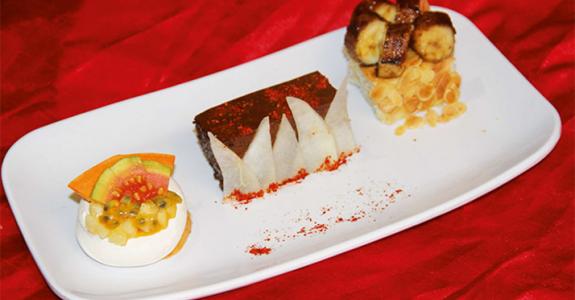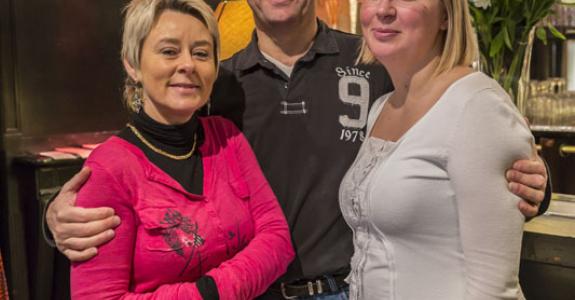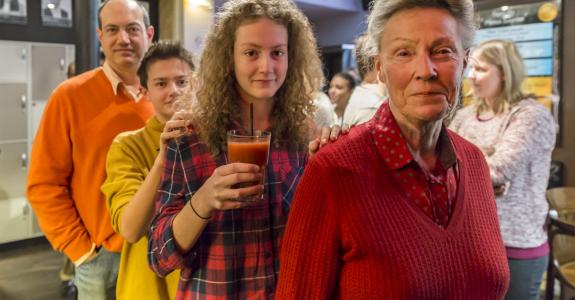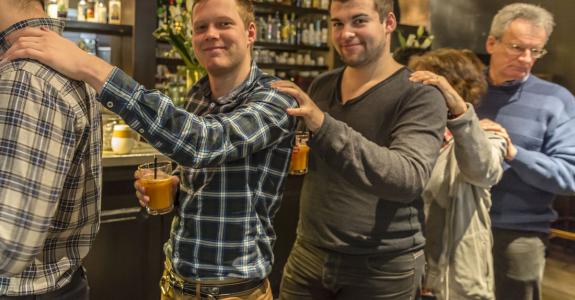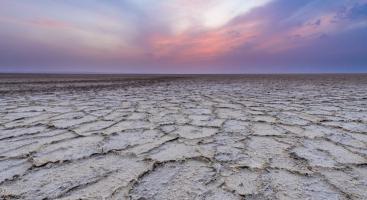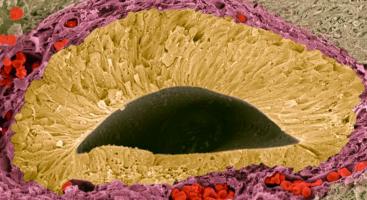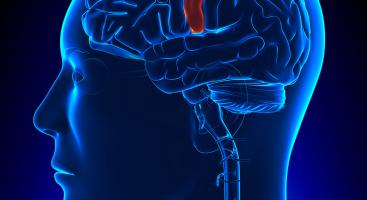Eating in the dark
Besides personal preference and being a fun thing to do, what really goes on in the brain when you eat in the dark? We decided to find out more by dining in the Parisian restaurant Dans le noir. As a result of not being able to see, we became particularly aware of changes in our sensory perceptions.
Since opening in 2004, the Parisian restaurant Dans le noir has been practically full ever since. The concept, developed by Ethik Investment Group, has met with global success and it is now possible to eat in the dark in restaurants around the world, from London to Berlin, New York and Barcelona. As soon as we arrived, we realised that this was no ordinary experience. We didn’t just remove our coats, as in a traditional restaurant, but we were also required to leave any object likely to emit light, including watches and mobile phones. The manager, Camille Leveillé, also asked that we wash our hands, as there was a high chance that they would end up in our food. That done, we were ready to embark on this unusual culinary and sensory adventure.
Escorted into the darkness by blind guides
Before entering the room, we were instructed to form a single file and place our left hand on the shoulder of the person in front. Mouran, the blind waiter who was to be our ‘assistant in the darkness’ took the hand of the person at the front of the line and led us. “We are going to pass through two curtains. There are no obstacles or steps – it’s flat. Inside the room, I’ll be there to assist you. Call me when whenever you want.” We were then plunged into darkness.
Being in the dark: An unsettling feeling
Inside the room it was completely dark, with nothing at all to hold on to. Our waiter guided me to a chair and the first thing I touched was the arm of the person to the right of me. We talked loudly to signal our presence to the people sat next to us and then the hubbub within the room quickly died down, interrupted only by occasional laughter between strangers.
For some, fear of the dark took over during this experience. Sybille, who came here for a meal with friends, felt more overwhelmed by this fear than she would have imagined. “I felt better once we were sat at the table. But making my way to the chair was agonizing. During the meal, the ceiling and the walls felt very close. It felt like I was in a confined, soundproof space, even though there were actually 60 people there!”
The feelings experienced by individuals in dark caves highlight the effect they have on the food cycle. “Losing the ability to perceive taste is categorised as an illness, but the fear of doing so can be very disturbing in itself. As a result, the whole brain becomes mobilised by this fear,” explains Karyn Julliard, a neuroscientist, researcher and lecturer at the University of Lyon 1, who specialises in the relationship between olfactory perception and food consumption. Even with your feet on the ground, the perception of volume is impossible in the dark. “Animals that hunt use their hearing to orient themselves, but this sense is somewhat reduced in humans, unless when crunchy food resonates in the cranium,” continues Karyn Julliard. “The purpose of going to a restaurant is to eat, therefore you focus on your plate and concentrate on the objects and people close to you.”
Jackie, a primary school teacher, overcame her fear thanks to the reassuring voice of the waiter, but found it very difficult to identify food and locate it on her plate. “Several times I put an empty fork in my mouth, so I ended up using my hand to position the fork and push the food onto it! I tried to imagine the colours of the food but couldn’t, except when I thought I was about to eat a leaf of lettuce, which then turned out not to be... I moved closer to smell the food, but still with no success! ”
In contrast to some animals, such as rats, humans usually rest in darkness. “Eating in the dark puts us in a state of conflict,” explains Karyn Julliard. “When we eat, we release highly stimulating molecules in the brain. For some people, it may be that that the stress caused by the lack of light is stronger than the feeling of hunger, to the point of disrupting the level of satiety. Fear of the dark also results in us being less focused on analysing the true perception of food.”
“It is difficult to identify what you are eating if you cannot see it.”
At Dans le noir, the chefs combine high-quality food and fresh and seasonal produce with spices and other flavourings that confuse clients’ senses. “Our chefs choose simple, familiar products, which they then alter sensorially,” explains Camille Leveillé. “The food may be crunchy, soft, cooked or raw.” The recipes are carefully prepared to trick our senses of taste and smell. On the menu for this particular day the starters included a mango and guacamole verrine, scallops with sage and veal tartare. The main course comprised beef fillet in a bitter cocoa sauce, sweet potato mash and chips, saffron bulgur and baby spinach salad. For dessert, there was almond sponge cake, meringue and a chocolate and Espelette pepper gateau.
If some of the participants were able to recognise several ingredients, most were thrown by the lack of visual aid. “By smelling and feeling the food, I was able to recognise most things, such as the steak, salad and chips. However, I didn’t realise that they were made from sweet potato, or that there was bulgur, as these are things I don’t usually eat,” says Élodie.
Mr Le Coz, on the other hand, believes he would be lost if he couldn’t see. “The meal lasted two hours without me being aware of the time, but I can’t say I enjoyed it because I couldn’t recognise the flavours. I thought I recognised the starter of guacamole and the chocolate cake for dessert, but I wasn’t sure. I would make a very poor food sampler in the dark!” For good reason. “When food is in your mouth, it has more to do with the retronasal olfactory senses than the sense of taste,” as Karyn Julliard later explains to me. “It stimulates the sensory receptors in the nasal cavity, which send information directly to the brain. Being in the dark is particularly unsettling for the human species because sight is the main factor that allows us to identify food. Once we become accustomed to this problem, we are able to concentrate on what we’re eating. All that remains is to detect the flavours in the oral cavity using the retronasal sense of smell and the sense of taste. "
Guillaume, a young engineer and wine enthusiast, was left disillusioned by the adventure. “Without being able to see, I was surprised by the tastes and easily mistaken as to what was on my plate. But it was the choice of wines in particular that was misleading. They were clearly chosen so that they couldn’t be identified.” This was confirmed by the manager, Camille Leveillé. “A classic example is getting someone to drink colourless mint water with added red colouring. Most people will recognise a strawberry or grenadine flavour,” according to the researcher Karyn Julliard. “This highlights the influence of sight in determining food.” Recent research also shows that oenologists and perfumers have adapted the neuronal zone of their brain devoted to smell, which is usually very small for the majority of people. “We would normally rather use texture or sense whether something is hot or cold, by placing it in our mouth,” explains Karyn Julliard.
Ultimately, eating in the dark allowed the participants to relate to one another via this experience. “We laughed a lot,” Élodie recounts. “Someone would drop their fork or spill some water. That made everyone relax and helped us to get to know each other without being overbearing.” The atmosphere even allowed us to toast one another even though we were strangers! This experience, both human and culinary, opened our eyes to a sensory world where physiological limits are tested and self-adaptation and self-discovery are key.



